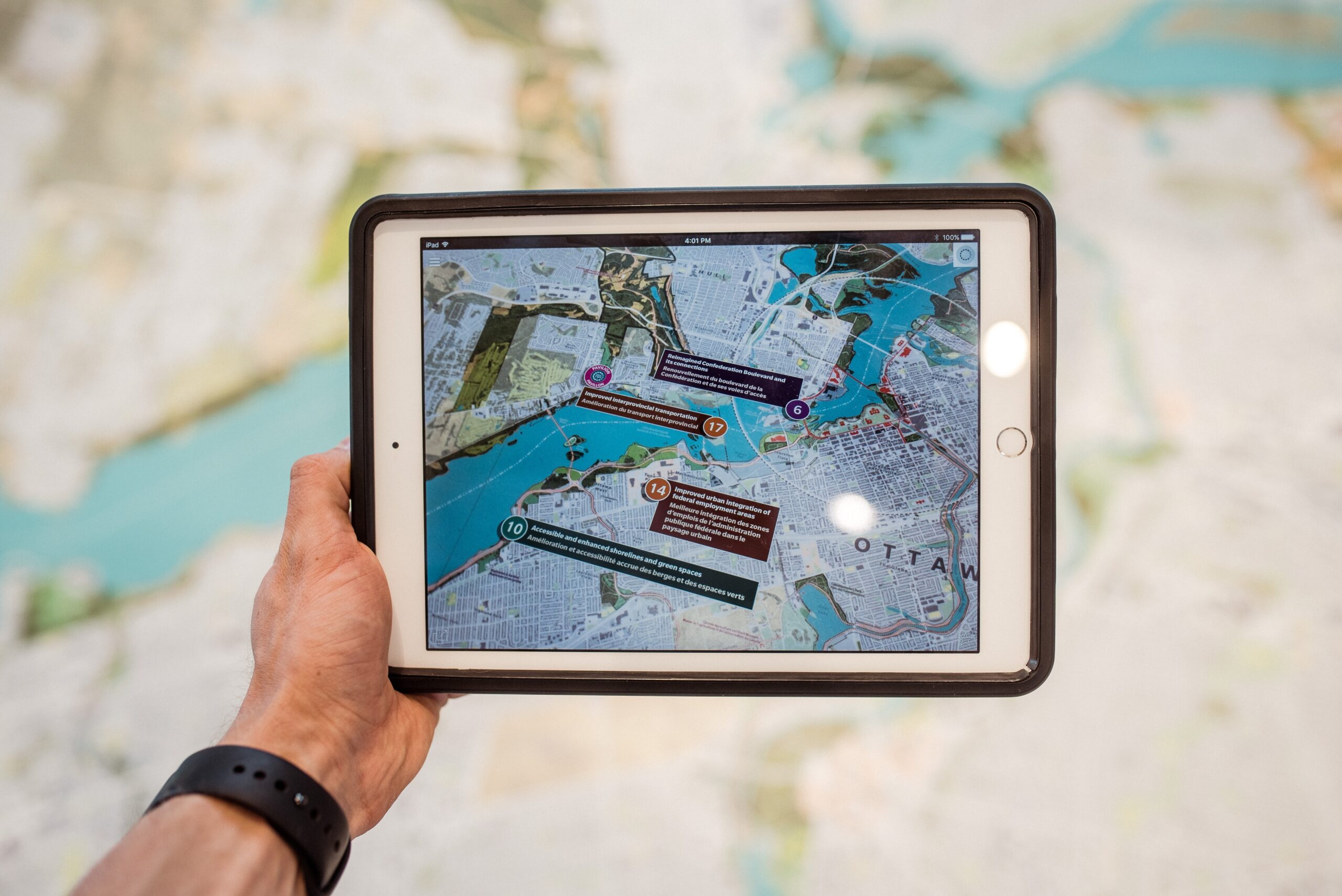Welcome to the amazing world of Augmented Reality! If you’re wondering what this magical technology is and why it’s such a big deal, then you’ve come to the right place. In this blog, we’ll discuss what Augmented Reality (AR) is, how it works, and why it’s revolutionizing the way we interact with our environment. So strap in and let’s explore the world of AR together!
Introduction to Augmented Reality
Augmented Reality (AR) is a technology that allows users to experience virtual objects in their physical environment. It combines both the real and virtual world with 3D entities and uses computer-generated content to create interactive, realistic experiences. Augmented Reality enhances the natural environment and can be used in many applications from gaming to education and workplace safety.
AR provides an unparalleled level of user experience due to its ability to offer a more contextual understanding of information than traditional methods such as text or images. With AR, the user can move around their physical environment while simultaneously experiencing a dynamic digital layer, allowing them to interact with digital objects as if they were real. This interactive experience brings physical data into our environment helping enhance digital knowledge sharing and collaboration.
The combination of augmented reality technology with digital media enables users to both view and interact with the virtual objects located in their surroundings. With AR, users can explore the real world around them from the comfort of their own living space or office through a variety of sophisticated tools such as headsets, image-recognition software, motion tracking devices and more. In addition, AR applications can provide enhanced contextual awareness such as location-based data which allows users to identify nearby points of interest or navigate indoors without having to take out a smartphone or rely on signal obstacles like walls blocking access points like GPS satellites.
History of Augmented Reality
Augmented reality (AR) technology has been around for a long time, evolving from primitive optical systems to innovative mobile apps and holographic displays. The history of augmented reality can be traced back to the 1950s, when Morton Heilig first developed the Sensorama machine. In 1992, Louis RosenbergÕs headset system added a new dimension to technology that had only been dreamed about a few decades prior, adding audio, visuals and other emerging technologies such as haptics and gesture tracking.
The need for AR solutions to become more user-friendly led researchers in the 2000s to adapt technologies such as smartphones and tablets. By 2010, smart glasses were becoming popular with businesses, with Google Glass paving the way in this space. At this time, companies began introducing mobile applications catering to gamers and restaurant-goers alike.
Today’s augmented reality focuses mainly on entertainment applications and consumer products rather than professional or training applications that were initially designed for early AR tools. Mixed reality (MR) combines AI technologies such as natural language processing (NLP), predictive analytics, computer vision and machine learning (ML) into immersive systems that blur the lines between physical and virtual worlds even further than existing AR solutions offer today!
Benefits of Augmented Reality
Augmented reality (AR) is a fast-growing technology that combines computer-generated 3D objects, or virtual overlays, into the real physical world. By using digital tools and content, AR creates interactive experiences by blending the physical and digital worlds in one environment.
The use of augmented reality has many benefits, including improving customer engagement, enhancing customer education and creating more immersive and memorable experiences. By combining digital 3D with real-world elements, businesses are able to give customers an enhanced understanding of their products, services and offerings.
Here are some of the key advantages for businesses leveraging augmented reality:
1. Streamlined Communication: When customers can see your product in action before they purchase it, they have a better understanding of what it can do for them. Augmented reality helps bridge the gap between imagination and remote applications by providing customers with realistic representations of what your business offers.
2. Enhanced Engagement: Augmented reality allows companies to engage with their customers on a deeper level than traditional methods of marketing or advertising can provide. Immersive experiences make customers more likely to remember your brand long after their initial purchase has been made.
3. Improved Education: By creating more engaging ways to educate customers about your product or service through interactive video or tutorials with step-by-step instructions boost learning capabilities while providing a deeper understanding of how your offerings work best in action rather than relying solely on written information material alone.
4Increased Customer Satisfaction & Retention: Providing an enhanced user experience that includes augmented reality empowers your users to make informed decisions quicker at different stages throughout their journey Ð be it pre purchasing research or post sale support activities – increasing satisfaction levels which lead to longer customer relationship activations rates
In conclusion, Businesses across many industries have found success in leveraging augmented reality as part of their communication strategy across sales, marketing , training & customer support operations .With enhanced engagement, improved educational & streamlined communication capabilities rolling out these portals enable companies greater insight into purchaser’s journeys
Applications of Augmented Reality
Augmented reality can be used in a wide range of applications, from mobile gaming to educational tools, from home decorators to automotive designers. With the help of special lenses or software applications, this technology adds digital elements such as sound, video, and graphics to physical spaces. Here are some potential uses for augmented reality:
– Mobile gaming: Augmented reality is increasingly being used in the gaming industry and many popular games now incorporate elements of augmented reality. Games like Pokemon Go! let players explore their environment while immersive games like escape rooms place players in alternate realities with digital clues that are only visible through a smartphone’s camera lens.
– Education and training: Augmented reality can help make learning more visual, engaging and interactive by creating 3D models which can then be manipulated by users. This technology can also be used to learn about dangerous environments without actually being there; NASA has used augmented reality glasses to train its astronauts remotely before virtual reality or immersive technology was developed.
– Home decor and design: Retailers have started using augmented reality to give customers an idea of how furniture or other items may look in their home before they commit to buying it. IkeaÕs Place app allows shoppers to virtually place products in their homes (even on a small scale) so they know exactly what they’re purchasing before it arrives on their doorstep.
– Automotive design: Traditional automotive testing often involves building full-scale prototypes but with augmented reality, manufacturers can use high-precision 3D models of cars during the design process which greatly reduces cost and time involved usually associated with prototyping successful products.
Technical Aspects of Augmented Reality
Augmented Reality (AR) is a technology that overlays digital content and information onto the physical environment in real time. It has been rapidly adopted in a variety of sectors, from industrial and healthcare to gaming and entertainment.
The technology employs an array of devices such as head-mounted displays, cameras, mono- or stereo-displays, smartphones, as well as specialized software to present virtual data on a computer-generated background in such a way that it seamlessly blends into the surrounding environment. This data can include 3D models superimposed over the physical objects around us or digital text overlaid on top of the world we see through our mobile devices.
For AR technologies to function properly they rely upon various integration platforms and content management systems. These are responsible for stitching together components such as user interface design, image recognition and image processing algorithms, 3D tracking algorithms and other technical aspects into a cohesive whole that enables users to interact with augmented objects in their environment.
One of the most important technical challenges involves identifying physical environments accurately enough so that augmented objects can be placed effectively within them. For example, when constructing 3D models from 2D images or video streams it is important for the system to be able to accurately determine relative shapes of planar surfaces or distances between features before attempting to synthetically superimpose objects onto them. This process is known as registration or object tracking and requires sophisticated algorithms capable of correctly interpreting both visually distinct features within the environment along with their relative three dimensional placements within it.
When implemented correctly these technologies enable people to benefit from immersive experiences tailored specifically for their individual use cases such as instructional applications providing contextual educational insights while responding seamlessly tot heir current environment by controlling what they see though their device screens at any given moment.
Challenges of Augmented Reality
The challenges faced by developers hoping to create effective augmented reality experiences are many. For example, the cost of content creation can be high as more complex graphics and animations need to be created for the user. Additionally, due to the varying mobile devices used by AR users, developers must pay attention to the performance and capacity of each device when creating an app or game. Furthermore, accurately stitching together physical and virtual elements so that users experience a smooth transition between real-world objects and digital components is an ongoing challenge for developers. Finally, data privacy is of utmost importance as user information must be protected when engaging in augmented reality experiences. All of these challenges can prove difficult for developers looking to create compelling augmented reality experiences; however, with careful attention paid during development cycles, they can help deliver immersive augmented reality experiences that build on existing technology while integrating engaging new content.
Future of Augmented Reality
Augmented reality (AR) has the potential to become an essential part of our lives, as it creates amazing experiences due to its combination of real-time 3D graphics and real-world environments. It provides an opportunity to interact with virtual objects through physical surroundings instead of just controlling a console.
The future of AR is expected to be quite exciting as it has a wide range of applications such as gaming, navigation and education, among many others. There are several emerging technologies that are expected to significantly enhance the capabilities of AR in the years ahead. These include various hardware and software advancements such as machine learning and big data analytics, immersive 3D audio and video streaming, advanced optics for precise location sensing, etc.
Moreover, there are many research efforts underway for harnessing the capabilities of AR for different types of digital experiences including interactive museums and exhibitions, sports broadcasting, remote collaboration and personnel training operations. With each passing year, more companies from different industries incorporate augmented reality into their overall business strategy in order to stay competitive or create new value for their customers.
Hence we can say that augmented reality presents a huge potential for both businesses and consumers alike in terms of interacting with products or services in more meaningful ways than ever before. The possibilities made available by this technology offer huge opportunities but there is still much room for exploration before they can become commonplace in our everyday lives.
Conclusion
Using augmented reality has the potential to drastically improve business operations, customer service and experiences. It allows businesses to bridge the gap between physical and digital worlds, create incredibly engaging experiences and enable customers to do things they couldn’t otherwise do. The possibilities are near limitless when it comes to using Augmented Reality as long as people remain creative in finding innovative ways to incorporate it into applications or events. Despite the potential downsides such as privacy issues or excessive reliance on technology, there is no doubt that augmented reality has the potential to revolutionize numerous industries.






